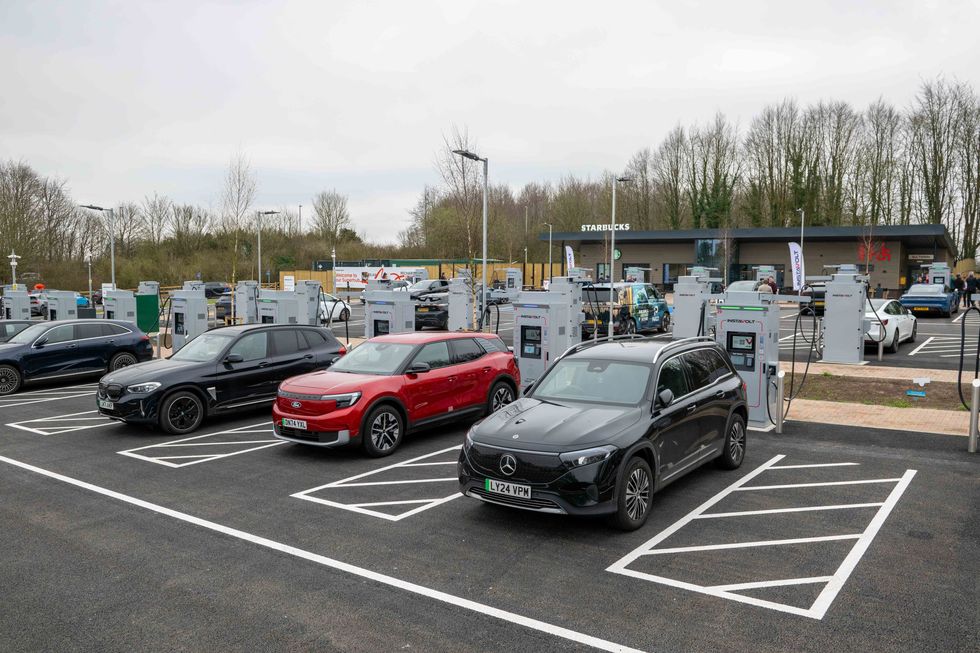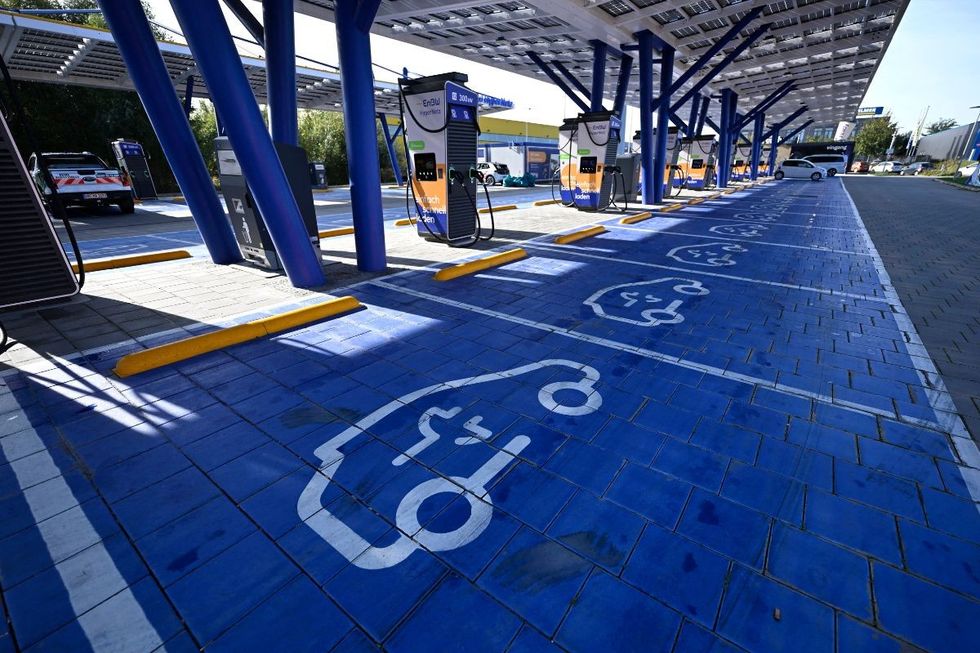WATCH: Department for Transport announces measures to make it cheaper to install electric vehicle charge points
GB NEWS
Electric vehicle charge points have shown little growth across Northern Ireland and East Midlands
Don't Miss
Most Read
Public charging points for electric vehicles across the UK have increased by 28 per cent in the past year, with Labour being urged to ensure they reach all corners of the UK.
According to new figures released today by the Department for Transport, there are now 76,507 public charging devices installed nationwide as of April 1.
This represents an increase of 16,837 devices compared to the same time last year, with the data also revealing a four per cent rise since January, with 3,173 additional charging points installed during the first three months of the year.
The majority of charging devices fell into the lowest power rating category, with 56 per cent operating at between 3kW and 8kW, according to the report.
Do you have a story you'd like to share? Get in touch by emailingmotoring@gbnews.uk

London was recorded as having the most public electric car charging points
PA
Only 20 per cent of devices were found to offer rapid charging capabilities of 50kW or above, totalling 15,446 units across the country.
Meanwhile, "on street" chargers made up the second largest category with 37 per cent of the total, equating to 28,316 devices located on residential streets.
The remainder were split between "en route" chargers for journey continuation (9.3 per cent) and "other" semi-public devices with restricted access (4.8 per cent).
Despite more chargers being installed, the geographical distribution remains uneven across the UK, with significant regional disparities being recorded.
London has the most chargers with 263 charging devices per 100,000 population, more than double the UK average of 113 per 100,000. At the other end of the spectrum, Northern Ireland has the lowest provision with just 35 devices per 100,000 residents.
For rapid charging devices of 50kW and above, Scotland was seen to have the most, with 34 per 100,000 population. Despite London's overall high provision, it ranked second lowest for rapid chargers with only 15.4 per 100,000.
However, Northern Ireland again had the lowest rapid charging provision at 9.9 devices per 100,000. While the overall trend showed growth, some regions have seen a decline in charging infrastructure since the start of 2025.
More shockingly, however, the North East of England and Northern Ireland both recorded a 1.2 per cent decrease in total charging devices between January and April this year.
The decline in the North East has been attributed to a charge point operator changing how they report data to Zapmap, according to the DfT.
The East Midlands saw "almost no growth" at all, with just a 0.1 per cent increase in total devices. In contrast, Scotland recorded the highest percentage increase at 9.2 per cent, adding 562 new charging points.
London added the most devices in absolute terms with 1,084 new installations, representing a 4.9 per cent increase, while the West Midlands also performed strongly with a 7.2 per cent rise, and the southwest saw a 5.4 per cent increase.
Phil Douglass, Vauxhall Electric Streets Director, said: "Access to convenient charging is crucial in supporting drivers make the move to electric vehicles and it's encouraging to see the number of on-street chargers continue to grow, with a strong 28 per cent increase in devices compared to April 2024.
LATEST DEVELOPMENTS:
- HGV drivers to be slapped with 'economic consequences' and 100-mile diversion next month amid road ban
- Driving law changes launching in May will see new HMRC fuel rules, car finance scandal updates and more
- SUVs pose catastrophic risk to pedestrians and cyclists amid urgent calls for new driving law changes

The Department for Transport recorded electric car chargers rising by almost a third last year
GETTY"However, just as important as the number of chargers growing is devices being installed in the right place."
He expressed particular concern about the declining figures in some regions. "The fact that public charging device figures have actually fallen in the northeast and Northern Ireland since the start of the year is surprising," Douglass noted.













